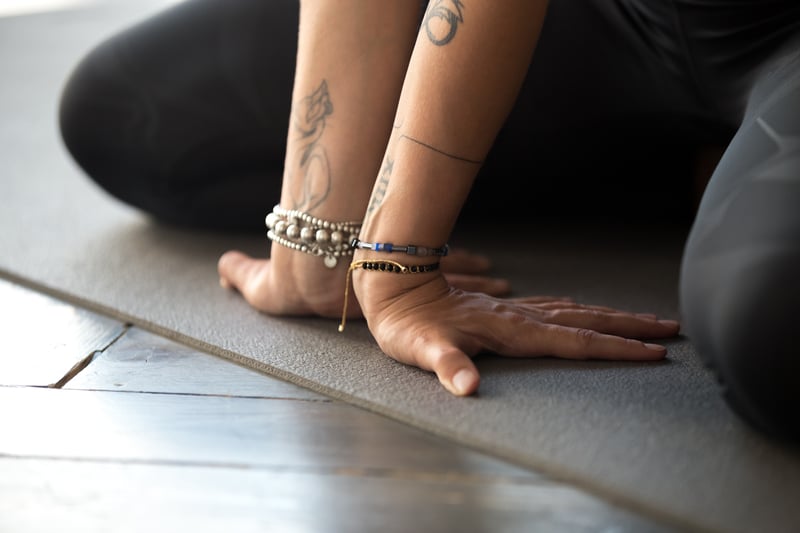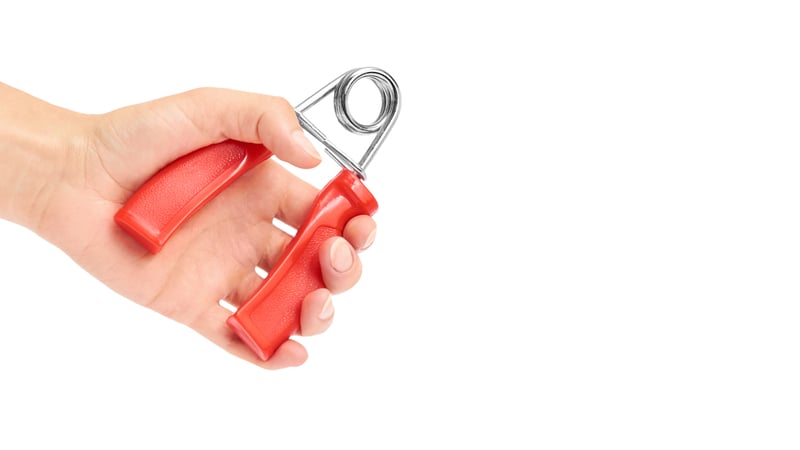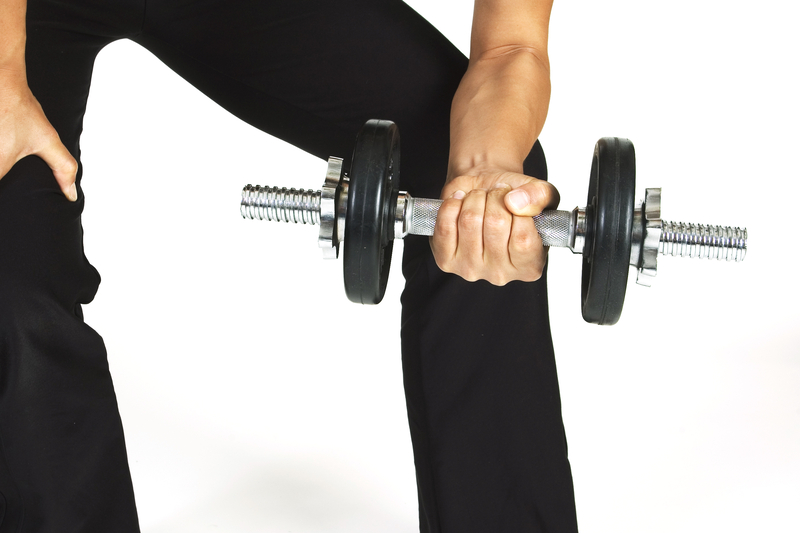11 Grip & Forearm Exercises You Can Do At Home

Ready to build muscle plus protect heart health and potentially extend health span? Then you’re really going to want to work on your grip and forearm strength. Your forearms are involved in a lot more movements than you might think, from gym exercises like pullups and rowing motions to everyday tasks like carrying groceries and opening doors.
Your grip is the amount of strength you have in your hands, wrists, and fingers. It enables you to, yes, grip things, but also to perform myriad other movements. Over 30 muscles, tendons, and bones are involved in producing your grip, and it’s important to keep them all strong and flexible.
There are three types of grip strength:
- Crush grip—this involves things like shaking hands, grasping things that your hands wrap around (like a baseball bat), or any time you need to crush something by bringing your fingers toward your palm.
- Pinch grip—this involves using your fingers and your thumb to pinch an object as you pick it up or move it.
- Support grip—this is your everyday carrying groceries in from the car grip. It’s also the type of grip you’d use to carry buckets of water or hold dumbbells.
Why Are Grip and Forearm Strength So Important?
Your grip and forearms are a critical component of most exercises. As you may remember, the hip bone is connected to the knee bone, which is connected to the shin bone, etc. Yes, everything seems to be connected to the forearms, and your grip strength will determine your overall strength and even your ability to improve your strength through resistance training, since grip is part of most movements.
Even more importantly, however, is how grip strength is related to aging well. Grip strength, for example, demonstrates not only overall strength but upper limb function, bone mineral density, risk of fractions, and malnutrition. There’s even evidence that a weak grip may be associated with cognitive impairment, depression, sleep issues, and diabetes.
Grip strength may help doctors predict all-cause and disease-specific mortality as well as future function and the risk of fractures and other problems, including helping measure risk of heart attack, stroke, or other cardiovascular disease.
One study found, for example, that each 11-pound decrease in grip strength was linked to a 16% increase of dying from any cause, 17% increase for heart disease deaths, 9% increased risk of stroke, and 7% increased risk of heart attack. Those stats remained true even when other factors, such as smoking, age, and exercise levels were accounted for.
In other words, grip strength is essential for improved quality of life and health outcomes.
Try These Grip and Forearm Exercises
These exercises are easy to do anywhere, any time. Even just doing these exercises sporadically, whenever you have a free moment, will only help improve your grip strength and keep your forearms strong.
1. Wrist Stretch Forward

Start on your hands and knees with your hands facing forward. Feel the stretch through your wrists. Once you’re comfortable in this position, lean your upper body slightly forward over your hands to flex your wrists even further.
2. Wrist Stretch Backward
While in the kneeling position, place your hands on the ground in front of you, palms down, but with your fingers facing your body. Gently move your hips back to feel a good stretch through your wrists. Don’t push it. Just allow the stretch to feel good.
3. Wrist Side to Side Stretches
These can be done in both of the above wrist positions. Simply rock gently side to side as you hold your wrists in position on the floor (instead of the forward or back).
4. Forearm Squeeze Gripper

This tried-and-true gadget is perfect for increasing your grip strength. Simply grab it in your hands and squeeze repeatedly.
SPECIAL OFFER: Ageless Turmeric Supports Healthy Inflammation Levels & Detoxification. Now Up to 71% Off.
5. Palm Up Curl

Start by sitting with your forearms on your thighs and a very light dumbbell in each hand (like one pound). You can even use a can of food or a water bottle if you don’t have light dumbbells. Your palms should be facing upwards. Next, curl the dumbbell up using your hands (and forearms) and bending at the wrists only—no biceps movement should take place. Do a set of ten curls with each wrist and then rest for one minute and repeat.
6. Palm Down Curl Up
Start by sitting again with your arms on your thighs but with your palms down this time. Hold a light dumbbell in each hand and start with your wrists in the bent position. Next, flex them upward and hold a squeeze at the top of the movement before returning to the start. Do a set of ten repetitions for each side and then rest one minute before repeating.
7. Dead Hangs
If you have the ability to do these at home from a bar or perhaps a doorway, these are a great way to upgrade your grip strength. Jump up and grab onto a bar so your body is suspended in the air (feet off the ground). Hang for as long as you can.
8. Double Handed Towel Pull
While this is typically done on a cable machine, the isometric hold you can do at home can be equally effective. Wrap the towel around something with a sturdy base and grab one end in each hand. Grab and pull as hard as you can for 15 seconds at a time. Release and repeat. If you do have a pullup bar you can use, try looping the towel over the bar and grabbing the ends and see if you have the strength to hang. If not, it’s the perfect thing to practice.
9. Farmer’s Walk

This old-school exercise will definitely help you improve your grip strength. You can use anything heavy, but most folks will perform this exercise with heavy dumbbells. Grab a dumbbell in each hand while standing with your arms straight by your sides. The dumbbells should be relatively heavy. Next, walk as far as you can while holding the dumbbells. Set them down, rest, and then repeat while walking in the opposite direction.
10. Plate Holds
Grab a resistance training plate between your fingers and thumb, without allowing the plate to touch your palm. Hold it for as long as you can before repeating on opposite side. Once you get stronger, try pinch holding a plate in each hand as you walk across the room.
11. Banded Hand Opening
Grab a thick rubber band and place it around the outside of your fingers and thumb. Alternate bringing your fingers together and apart to stretch the band. Do 20 repetitions with one hand before repeating with the opposite hand.




 7 Signs Your Body is Seriously Low on Collagen (not just wrinkles)
7 Signs Your Body is Seriously Low on Collagen (not just wrinkles) Health Expert: "Turmeric Doesn't Work (unless...)"
Health Expert: "Turmeric Doesn't Work (unless...)" 3 Warning Signs Your Probiotic Supplement is a Total Waste
3 Warning Signs Your Probiotic Supplement is a Total Waste

